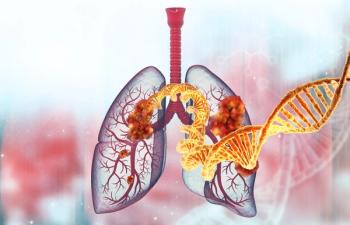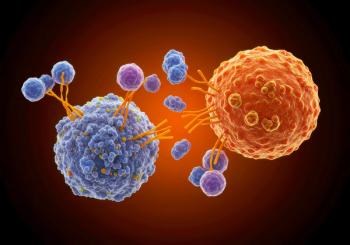
Pharmacy Practice in Focus: Oncology
- February 2020
- Volume 2
- Issue 1
Heterogenous Disease Creates Challenges in AML; New Treatment Options Offer Solutions
Many people are unaware that acute myeloid leukemia (AML) is the leading cause of acute leukemia in adults.
Many people are unaware that acute myeloid leukemia (AML) is the leading cause of acute leukemia in adults. Considered an aggressive cancer, AML is diagnosed in approximately 21,000 individuals annually and slightly more than half that will die each year. The median age of onset is 67 years, and treatment outcomes are progressively worse as the patient ages. It appears that risk is elevated if people have had antecedent hematologic malignancies, environmental exposures to carcinogens, or had previous chemotherapy, radiation, or immunosuppressant therapy.
Of most importance, AML is a heterogenous disease and improved molecular understanding is increasing clinicians’ abilities to predict outcomes and improve treatment. The 2019 Directions in Oncology Pharmacy™ conference included a comprehensive session on AML. Larry W. Buie, PharmD, BCOP, FASHP, clinical pharmacy manager, Memorial Sloan Kettering Cancer Center in New York City, gave this presentation.
AML has been associated with a number of different mutations. At this time, 2 mutations, FLT3 and IDH1/2, are receiving the most attention. FLT3 is a receptor tyrosine kinase involved in hemato- poiesis. Mutations in this particular gene are associated with a shorter duration of remission, decreased disease-free survival, and poor outcomes. IDH1/2 provides enzyme de-carboxylation of isocitrate. This mutation’s incidence is between 6% and 9% in AML, and clinical trials have provided conflicting prognostic information.
A typical course of treatment for a patient with AML includes induction, followed by re-induction if the patient has an incomplete response. If the patient responds completely and goes into remission, he or she progresses to consolidation with postremission therapy or transplant. In both cases—incomplete response or complete remission—if the disease eventually relapses, clinicians will move to salvage therapy.
The goals of therapy for AML include complete remission, restoration of normal hematopoietic functions, and no evidence of measurable residual disease. Buie dissected the response criteria for AML, educating audience members about the differences between complete morphologic response, complete psychogenic response, and complete molecular response. He also indicated that induction failure is failure to attain a complete response following at least 2 courses of induction.
Targeted therapies have become the order of the day combined with conventional therapies for AML. FLT3 inhibitors have emerged as a frontline therapy in AML. Buie indicated that risk stratification is absolutely critical. The oncology team needs to analyze the patient’s specific mutation, his or her allelic ratio, the presence of co-mutations (with the presence of an NPM1 mutation a good sign), and an assessment of FLT3-ITD at relapse associated with very short survival. Midostaurin is approved for use with cytotoxic chemotherapy in induction and consolidation for treatment-naïve patients. Gilteritinib has demonstrated improved overall survival (OS) in patients with relapsed or refractory AML. Sorafenib is sometimes used off label and other agents such as quizartinib and crenolanib are under investigation.
Buie next focused on the evolving treatment paradigm for the treatment of IDH-mutated AML, including the use of enasidenib, an IDH2 inhibitor approved for patients with relapsed/refractory (R/R) AML with an IDH2 mutation and the use of ivosidenib, an IDH1 inhibitor that has 2 indications, including newly diagnosed patients aged at least 75 years with an IDH1 mutation and also for R/R AML showing an IDH1 mutation. Both agents carry a high risk for differentiation syndrome that can be severe, but can be effectively managed if caught early and treated with dexamethasone, a corticosteroid.
Buie took some time to review the growing evidence-based options for elderly patients with comorbidities, starting first with liposomal daunorubicin/cytarabine, which has demonstrated an improvement in OS compared with traditional 7+3 in a phase 3 randomized clinical trial in those aged 60 to 75 years with treatment-related or myelodysplastic syndrome-related AML.
Venetoclax is a prosurvival molecule within the cell, and a key regulator of mitochondrial pathways. Administered orally, it is highly selective for BCL-2 inhibition, which frees proapoptotic proteins to induce apoptosis. Proven to induce death in AML cell lines, it may be useful in eliminating chemotherapy-resistant disease. One special consideration for pharmacists is that venetoclax is a major CYP3A4 and P-glycoprotein substrate. This introduces a need for proactive monitoring for drug interactions.
Buie also spent time introducing the audience to the hedgehog pathway, a pathway that in AML is addressed with glasdegib. Hedgehog signaling is essential to embryonic development, and aberrant signaling is implicated in leukemia stem cell survival. Patients whose tumors overexpress hedgehog signaling often turn out to be chemotherapy resistant. Glasdegib, an oral agent, binds smoothened, a component of the hedgehog signaling pathway, interrupting hedgehog signaling and is approved for use in newly diagnosed AML with low-dose cytarabine in patents aged 75 years or older.
Many clinicians hesitate to treat cancers aggressively if patients are older. One point of emphasis in this presentation was that patient selection for intensive therapy depends on a number of factors, and age is not necessarily one of them. Less intensive combination therapies can be employed for unfit patients— those who are frail or have significant comorbidities, or cannot tolerate aggressive therapy—but for many patients regardless of age, aggressive therapy is warranted.
Buie made another significant point: Whenever possible, clinicians and patients should be encouraged to enter clinical trials. Clinical trials are essential in this particular disease state because data are needed to find targeted therapies for specific mutations.
Articles in this issue
over 5 years ago
PARP Inhibitors: A Novel Approach to Treating Ovarian Cancerover 5 years ago
Melanoma: Increasing Cases and Growing Treatment PossibilitiesNewsletter
Stay informed on drug updates, treatment guidelines, and pharmacy practice trends—subscribe to Pharmacy Times for weekly clinical insights.















































































































































































































